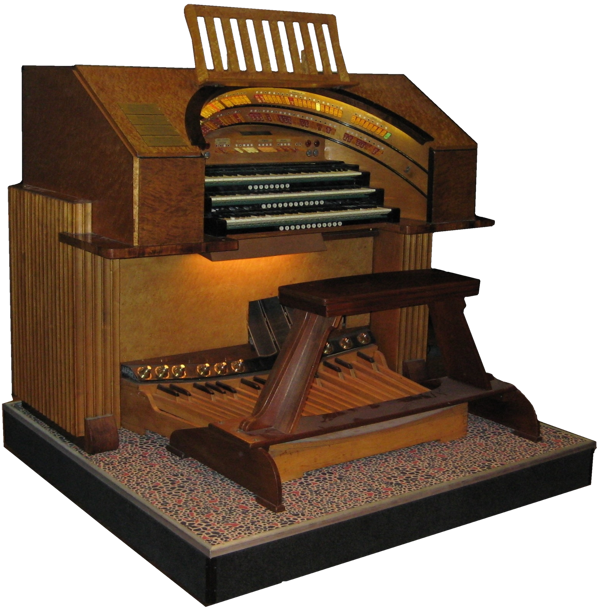Technique behind the Theatre Organ part 6
The organ sound emanating from the organ rooms. 
Here the shutters are mounted vertically: the sound is distributed almost evenly throughout the available space.
All the pipes and musical instruments of the one-person orchestra are situated in one or more organ rooms.
Some organs have part (or all) of the percussion placed outside the organ room.
This is mainly to provide a pleasing visual aspect but in some cases is due to space restrictions.
This part of the organ can then not be adjusted in strength.
The Asta organ in Scheveningen was built in two rooms: one for the main organ which is played by the first manual (accompaniment), the second manual (main) and the pedal (actually a manual for the feet). The other room houses the ‘solo’ organs, solo I for the third manual and solo II for the fourth manual.
The current Asta organ is set up in three organ rooms.
When the organ rooms are situated high up, it is preferable to use horizontal shutters to direct the sound downwards. The sound level is controlled using swell pedals, one for the shutters in each room.
The dynamic effect is characteristic of the theatre organ. The volume can be muted even if many (or all) of the registers are being used!
Nowadays, it is possible to combine the shutter control using a register switch. This makes things easier for the organist who can then open and close multiple shutters with one foot.
The swell pedal on the far right is referred to as the crescendo pedal. When this is engaged by the organist the sound level increases. More ranks can be added all the time. This pedal provides the organist with many dynamics at his disposal!


These foot-operated switches almost always serve to provide the special effects in the orchestra and are used for silent films. Examples of these effects are bird song, drums, bells, train or steam engine whistles, triangles, sound of wind, rain and many more.
Some organs also use these switches for the control of the preset relay (Compton).


